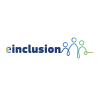Isaac started out as a tool for development: a Personal Digital Assistant (PDA) for differently abled persons. Isaac was developed at Certec and combined in one unit a regular PDA, digital camera, a satellite navigation receiver and cellular phone channels for both voice and data. Today the project is about using pictures as cognitive support and a means of communication.
Description of target users and groups
Isaac serves adults and children with language disorders due to cognitive limitations, autism, aphasia, traumatic brain injury, learning disabilities, their families, friends, caregivers, teachers,professionals.Description of the way to implement the initiative
Isaac today is freeware available on the Internet and on CD (only in Swedish at present). The purpose of the software is to make it easy to use pictures as language.Technology solution
Freeware for windows Technology choice: Open source softwareMain results, benefits and impacts
Isaac serves adults and children with language disorders due to cognitive limitations, autism, aphasia, traumatic brain injury, learning disabilities, their families, friends, caregivers, teachers,professionals. Access to the digital technology described in 4, has improved communication and quality of life for thousands of disabled people over the last 15 years. It has enabled them to communicate in ways they never would have been able to otherwise and has acted as essential cognitive support. It has introduced ICT as tools for teaching and learning to the community of thousands of special ed/regular teachers, therapists, personal assistants; as tools for communication and instruction in hundreds of day activity centres/group homes. Because Isaac had been working with digital photos for years there was an explosion in the transferring of photos between work and home when portable DVD players became commercially available. It has been an eye-opener for how ICT can be used and sped up the process considerably. This is measurered by the many individual testimonials; thousands of study visits to living labs like the Pictorium; media coverage in/outside Sweden (Alan Alda's Scientific American Frontiers viewed by 20 million in 1998 about this breakthough.); over 100 publications in journals, proceedings, books; visits to Certec's website (300,000 in 2001) many to the Isaac pages; approx. 400 lectures by Certec's staff to professional groups, parents, educators, organizations; inclusion in Certec's annual university course in rehabilitation technology attended by 500 professionals 1993-2005; municipal/county seminars; annual presentations since 1995 as an interactive display at Certec's Information Day attended by 500; presentations at European/North American conferences. Democratization factor. The revolution in the teaching-learning process brought about by the Internet is akin to putting Isaac's ICT capabilities in the hands of developmentally delayed adults. Today Isaac is more a framework of ideas that can be implemented in different ways.Those introduced to it put it into action in their own versions. Since technical developments have made the components commercially available and inexpensive, it is impossible to keep count of all the users. We know, though, that at least half of the special educators in Sweden have been inspired to use digital cameras and related technology in their teaching and dealings with families. Most important is the development in awareness of how we can utilize digital pictures for communication with people lacking spoken, written or sign language. This is due to all the experience from the many living lab settings that have emerged. Isaac has become an entirely new paradigm, another way of thinking and acting.Return on investment
Return on investment: Not applicable / Not availableTrack record of sharing
At least 37 publications. Articles over the years in newspapers, disability organization/professional periodicals. Courses offered to university students; ones tailored to active professionals and organizations. Countless lectures at Swedish and European disability conferences, meetings, government agencies, disability organizations, lobby groups, etc., attended by at least 10,000 people over the years. These have inspired people with cognitive difficulties, relatives, school, healthcare and social service professionals to use digital cameras and other high-tech devices in a field that was not intended for them from the beginning. Annual Certec Information Day since 1995 attended by 500 people. Study visits to living labs including the Pictorium's approx. 4,000 visits over 10 years. Picture WebBoard as a discussion forum. Nationally broadcasted documentary "Uncommon Friendship".Lessons learnt
You cannot rely on needs to be formulated by themselves just because they exist. By providing a solution, technology can be a very good way of showing that a problem exists and of what it consists. On the other hand, later on in the process, sometimes the initiative shifts and then it is hard work keeping up with all the ideas which are being generated. You cannot know until you have tried. Things start happening when empowerment works. Otherwise not. More lessons can be found in http://www.certec.lth.se/doc/whatisaac/ Scope: National
Login or create an account to comment.

